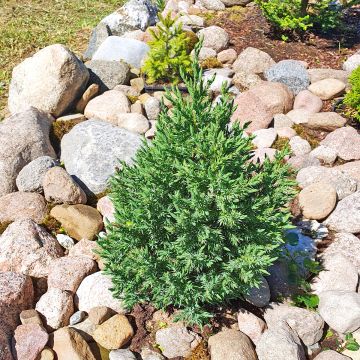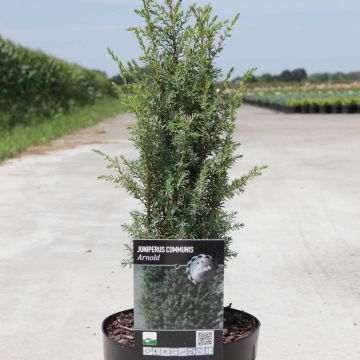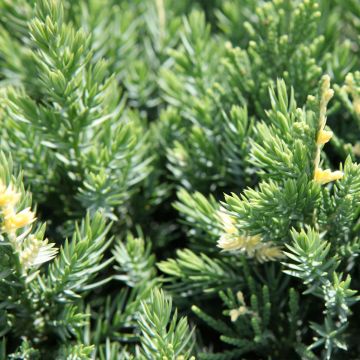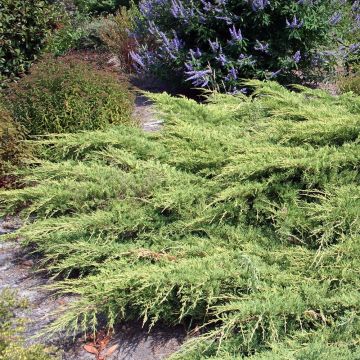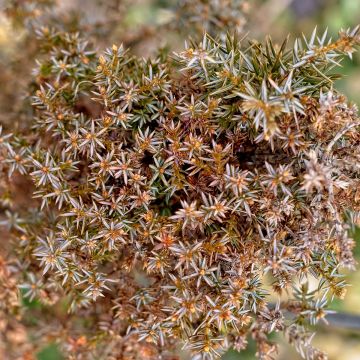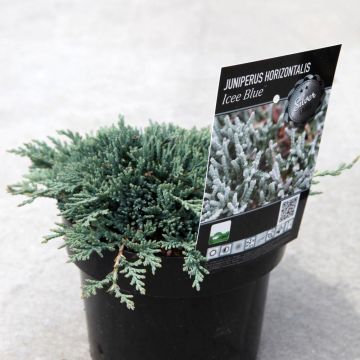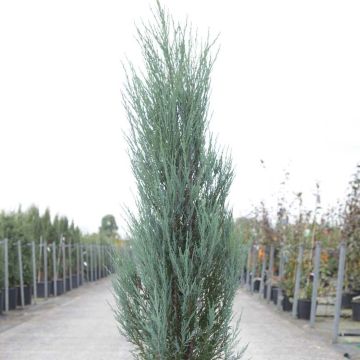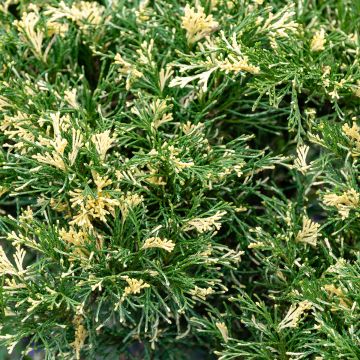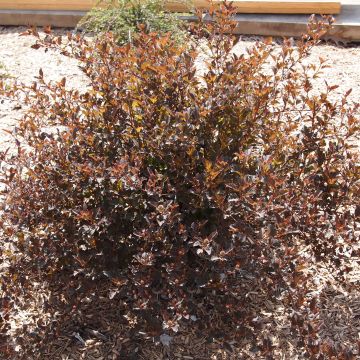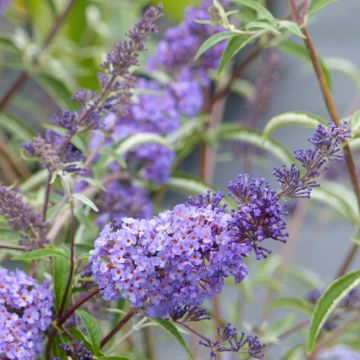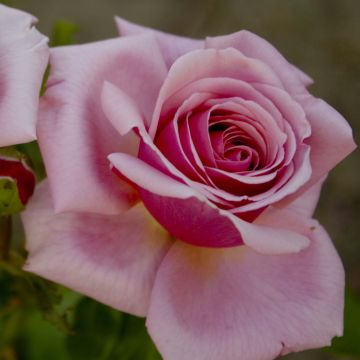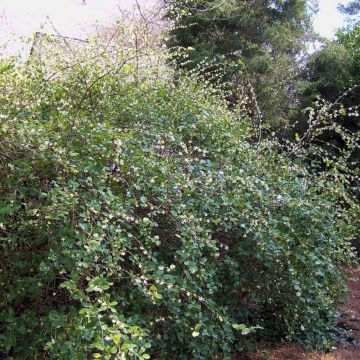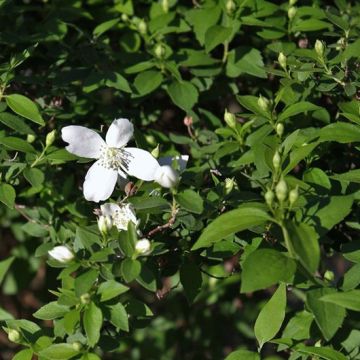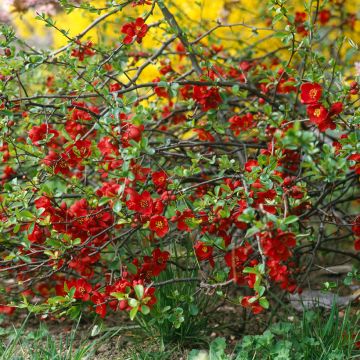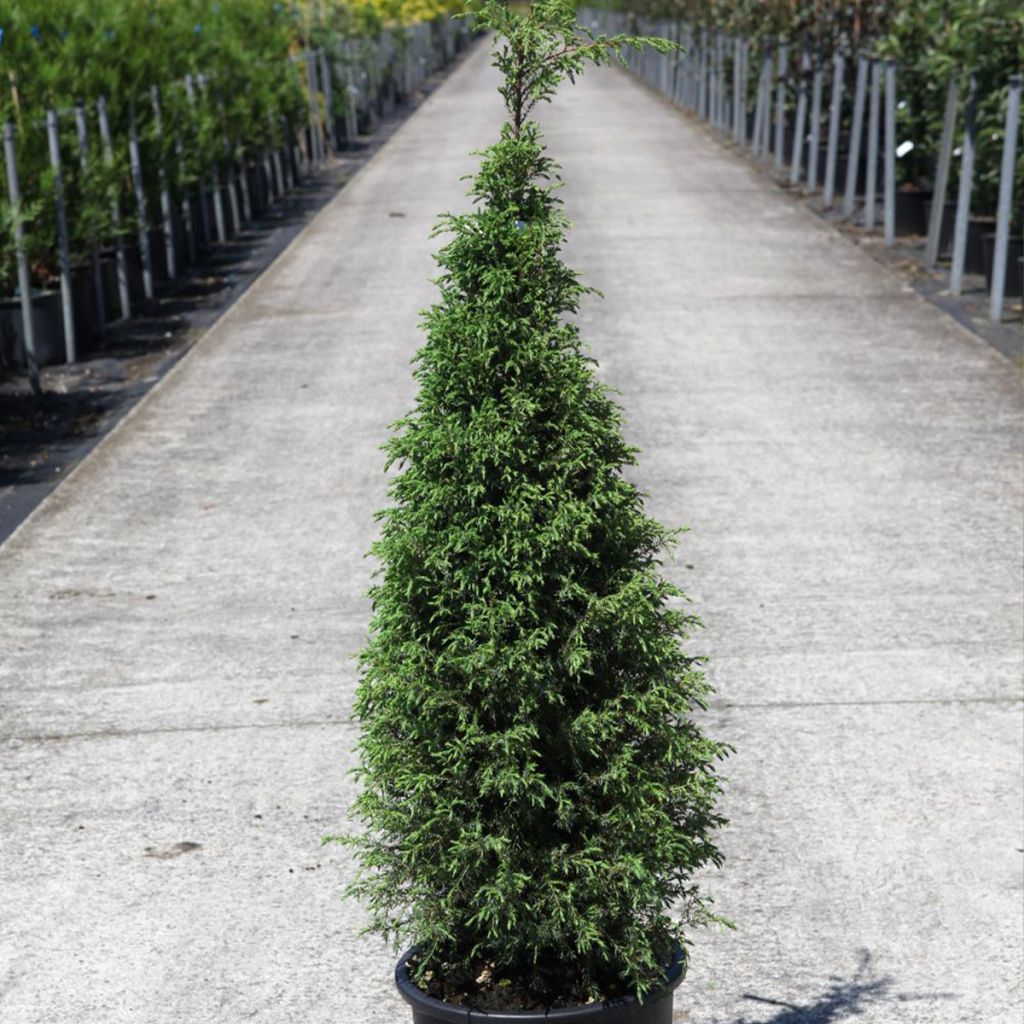

Juniperus communis Pyramidalis
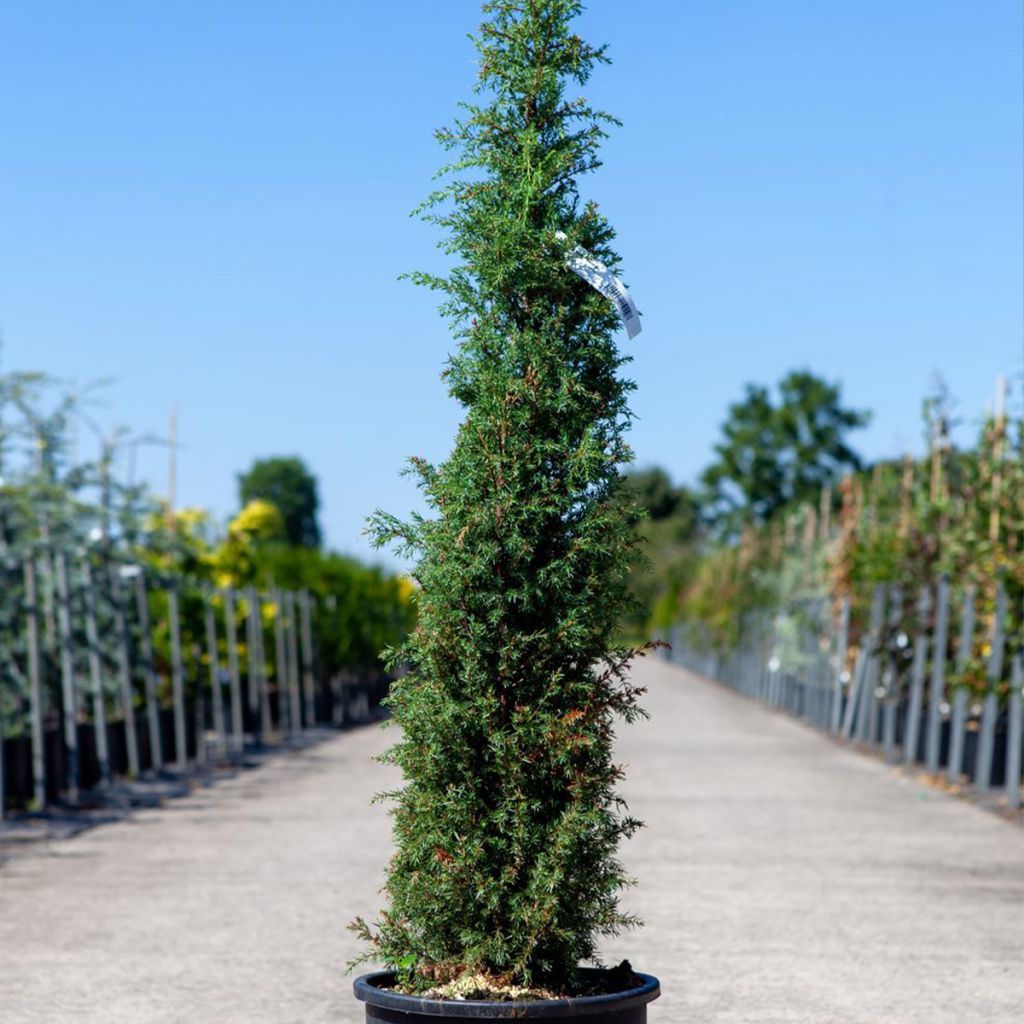

Juniperus communis Pyramidalis
Juniperus communis Pyramidalis
Juniperus communis Pyramidalis
Common Juniper
This item cannot be shipped to the selected country
Oversize package delivery charge from €6.90
Delivery to Corse prohibited
More information
Schedule delivery date,
and select date in basket
This plant carries a 24 months recovery warranty
More information
We guarantee the quality of our plants for a full growing cycle, and will replace at our expense any plant that fails to recover under normal climatic and planting conditions.
Oversize package: home delivery by special carrier from €6.90 per order..
Express home delivery from €8.90.
Delivery to Corse prohibited: UE law prohibits the import of this plant from mainland France to Corse as part of the fight against Xylella fastidiosa. Please accept our sincere apologies.
More information
Does this plant fit my garden?
Set up your Plantfit profile →
Description
Juniperus communis 'Pyramidalis' is a variety of common juniper that is very decorative. This beautiful conifer naturally adopts a pyramidal habit that is quite tapered and has a very graphic appearance. Its evergreen foliage has a beautiful silver-grey colour all year round. It is very adaptable to different types of soil, enjoys full sun and tolerates partial shade well, and is hardy, making it an easy plant to grow in the garden. Its architectural habit can be highlighted when planted alone, in groups, or in rows, but it can also be integrated as a background plant in a flowerbed. Its striking geometric architecture makes it a great choice for contemporary gardens.
Juniperus communis is an evergreen and spiny conifer belonging to the Cupressaceae family, which also includes well-known species such as cypresses, Thuja, and Chamaecyparis. It is native to northern Europe, North America, and Asia Minor. In its natural environment, it has a fairly variable habit, either conical or spreading, reaching a height of 6m (19ft 8in) and a spread of 3 to 4.50m (9ft 10in to 14ft 10in). This species prefers poor, sandy, and/or limestone soils and is not afraid of dry conditions.
The 'Pyramidalis' juniper, derived from this species, is, as its name suggests, a pyramidal form. This conifer takes on a tapered shape, wider at the base and pointed at the top, with a very regular appearance that can be further enhanced by light annual pruning with shears. It reaches about 4m (13ft 1in) in height and 1m (3ft 4in) in width, forming a very dense and aesthetically pleasing mass of vegetation. Its evergreen foliage has a beautiful grey, silvery colour that remains decorative throughout the year.
The foliage consists of small, pointed, rigid, and prickly leaves that are densely arranged on the branches. The inconspicuous flowering is followed by green fruits that turn blue-black in autumn.
This juniper's great adaptability allows it to thrive in most soils. It is hardy (down to -20°C (-4 °F)) and is an easy plant to grow, finding its place in most gardens.
The 'Pyramidalis' juniper is an elegant conifer that is highly recommended for its architectural habit and density. Due to its very graphic shape, it works wonders when planted alone, on a slope, in a large rock garden, or even in a group of odd numbers in a flowerbed, alongside shorter or taller conifers with rounded or bushy habits, creating attractive plays of volumes and colours throughout the year.
It will be in perfect harmony with a contemporary-style garden, where its aesthetic habit will be well showcased. It can be happily associated with other conifers to create contrasts in shapes and colours, such as with the Taxus 'Summergold' with its spreading habit and golden young shoots.
With its naturally almost perfect shape, which can be further enhanced with slight pruning with shears, it is an ideal candidate for a topiary scene, alongside a 'Golden Gem' crenate holly with fine and evergreen foliage similar to that of a boxwood, and whose yellow colour will contrast with the foliage of this juniper. Purple foliage will also harmonize well with the silver-grey of this conifer, such as that of the 'Rode Zellernoot' hazel or the 'Black Lace' elderberry.
Report an error about the product description
Juniperus communis Pyramidalis in pictures
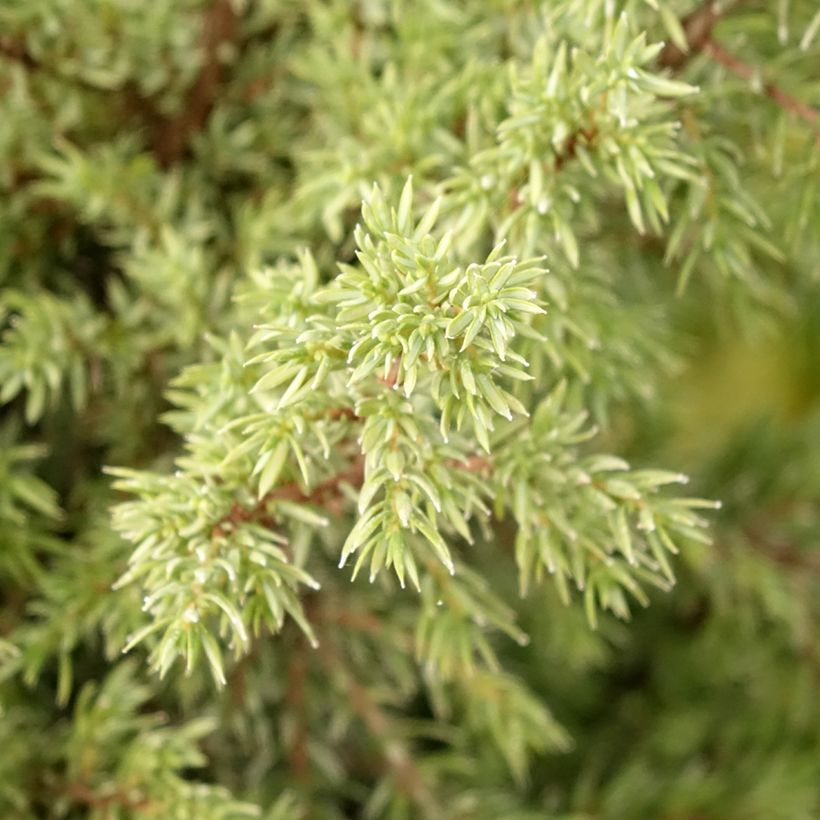

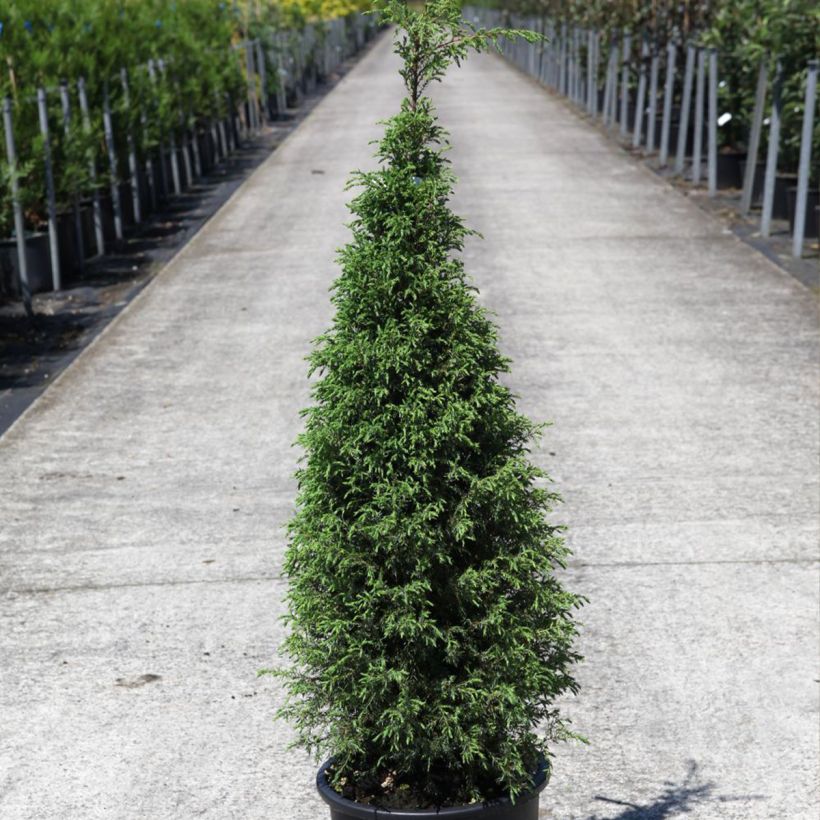

Plant habit
Flowering
Foliage
Safety measures
Botanical data
Juniperus
communis
Pyramidalis
Cupressaceae
Common Juniper
Cultivar or hybrid
atteinterespiratoire
Cette plante peut entraîner des symptômes allergiques.
Evitez de la planter si vous ou vos proches souffrez de rhinite saisonnière ("rhume des foins").
Davantage d'informations sur https://plantes-risque.info
Other Juniperus - Juniper
Planting and care
Juniperus communis 'Pyramidalis' is preferably planted from September to November, or from February to April in well-drained, light, even limestone and poor soil. A rocky or sandy soil that is occasionally dry does not bother it. It can also grow in slightly acidic soil, as it is very adaptable. Only excess water or drought are harmful to it. Choose a very sunny or semi-shaded location sheltered from prevailing winds that could uproot it. Soak the root balls well before planting.
Add organic amendment at planting and water the first few years, then it is quite resistant to drought. From the second year onwards, apply a special conifer fertilizer every year in April, preferably before a rainy episode. This very hardy conifer fears heavy soils, saturated with water in winter.
Pruning is not essential, but can help maintain a beautiful habit for the bush, or form a hedge. It consists of removing only the tips of new shoots to maintain a perfect shape for the bush. It is done towards the end of June and can continue until the beginning of September.
Planting period
Intended location
Care
This item has not been reviewed yet - be the first to leave a review about it.
Foolproof Shrubs
Haven't found what you were looking for?
Hardiness is the lowest winter temperature a plant can endure without suffering serious damage or even dying. However, hardiness is affected by location (a sheltered area, such as a patio), protection (winter cover) and soil type (hardiness is improved by well-drained soil).

Photo Sharing Terms & Conditions
In order to encourage gardeners to interact and share their experiences, Promesse de fleurs offers various media enabling content to be uploaded onto its Site - in particular via the ‘Photo sharing’ module.
The User agrees to refrain from:
- Posting any content that is illegal, prejudicial, insulting, racist, inciteful to hatred, revisionist, contrary to public decency, that infringes on privacy or on the privacy rights of third parties, in particular the publicity rights of persons and goods, intellectual property rights, or the right to privacy.
- Submitting content on behalf of a third party;
- Impersonate the identity of a third party and/or publish any personal information about a third party;
In general, the User undertakes to refrain from any unethical behaviour.
All Content (in particular text, comments, files, images, photos, videos, creative works, etc.), which may be subject to property or intellectual property rights, image or other private rights, shall remain the property of the User, subject to the limited rights granted by the terms of the licence granted by Promesse de fleurs as stated below. Users are at liberty to publish or not to publish such Content on the Site, notably via the ‘Photo Sharing’ facility, and accept that this Content shall be made public and freely accessible, notably on the Internet.
Users further acknowledge, undertake to have ,and guarantee that they hold all necessary rights and permissions to publish such material on the Site, in particular with regard to the legislation in force pertaining to any privacy, property, intellectual property, image, or contractual rights, or rights of any other nature. By publishing such Content on the Site, Users acknowledge accepting full liability as publishers of the Content within the meaning of the law, and grant Promesse de fleurs, free of charge, an inclusive, worldwide licence for the said Content for the entire duration of its publication, including all reproduction, representation, up/downloading, displaying, performing, transmission, and storage rights.
Users also grant permission for their name to be linked to the Content and accept that this link may not always be made available.
By engaging in posting material, Users consent to their Content becoming automatically accessible on the Internet, in particular on other sites and/or blogs and/or web pages of the Promesse de fleurs site, including in particular social pages and the Promesse de fleurs catalogue.
Users may secure the removal of entrusted content free of charge by issuing a simple request via our contact form.
The flowering period indicated on our website applies to countries and regions located in USDA zone 8 (France, the United Kingdom, Ireland, the Netherlands, etc.)
It will vary according to where you live:
- In zones 9 to 10 (Italy, Spain, Greece, etc.), flowering will occur about 2 to 4 weeks earlier.
- In zones 6 to 7 (Germany, Poland, Slovenia, and lower mountainous regions), flowering will be delayed by 2 to 3 weeks.
- In zone 5 (Central Europe, Scandinavia), blooming will be delayed by 3 to 5 weeks.
In temperate climates, pruning of spring-flowering shrubs (forsythia, spireas, etc.) should be done just after flowering.
Pruning of summer-flowering shrubs (Indian Lilac, Perovskia, etc.) can be done in winter or spring.
In cold regions as well as with frost-sensitive plants, avoid pruning too early when severe frosts may still occur.
The planting period indicated on our website applies to countries and regions located in USDA zone 8 (France, United Kingdom, Ireland, Netherlands).
It will vary according to where you live:
- In Mediterranean zones (Marseille, Madrid, Milan, etc.), autumn and winter are the best planting periods.
- In continental zones (Strasbourg, Munich, Vienna, etc.), delay planting by 2 to 3 weeks in spring and bring it forward by 2 to 4 weeks in autumn.
- In mountainous regions (the Alps, Pyrenees, Carpathians, etc.), it is best to plant in late spring (May-June) or late summer (August-September).
The harvesting period indicated on our website applies to countries and regions in USDA zone 8 (France, England, Ireland, the Netherlands).
In colder areas (Scandinavia, Poland, Austria...) fruit and vegetable harvests are likely to be delayed by 3-4 weeks.
In warmer areas (Italy, Spain, Greece, etc.), harvesting will probably take place earlier, depending on weather conditions.
The sowing periods indicated on our website apply to countries and regions within USDA Zone 8 (France, UK, Ireland, Netherlands).
In colder areas (Scandinavia, Poland, Austria...), delay any outdoor sowing by 3-4 weeks, or sow under glass.
In warmer climes (Italy, Spain, Greece, etc.), bring outdoor sowing forward by a few weeks.

































